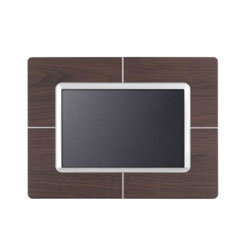

We can understand making a collage out of several images, but we didn't see the appeal in a collage made of single image. There's also a collage mode that allows you to display the same photo on the screen in a variety of sizes with various layouts to choose from. Turning back to features, aside from the increased number of transition effects, Philips has also thrown in some basic editing capabilities that include image cropping, rotating, and the ability to give your images a black-and-white or sepia tint. Naturally, the quality of the image onscreen will depend on how good the source photo is. All in all, the images were very sharp with vibrant, accurate colors. The display had a little trouble resolving darker gray backgrounds (we noticed some false contouring), but that's a minor flaw. In other words, if you have a fairly high-capacity memory card (512MB or greater), you're probably best off just loading the card with photos and leaving it in the display.Īs noted, we were impressed by how our pictures looked on the frame. The biggest impact of reducing your images' size (along with their file size) is that transition effects in slide show mode (you can select from 14 transition effects, as well as random mode) work more smoothly. Since the screen has 680x480 pixels, Philips says that some cropping may occur, but it must be minor because we didn't notice much in the various images we viewed. If your image won't quite translate to 720x540, the display adds black bars to the top and bottom or the sides rather than cropping your image-which is a good thing some frames chop off large parts of your picture. For instance, we shot some images with an Olympus Evolt 500 dSLR that started out with resolutions of 3,264x2,448 and were sized down to fit. The one advantage to transferring the photos to the display's internal memory is that, as part of the copying process, the unit automatically resizes the images to 720x540 pixels-or as close as it can get to that size. Another option is to upload photos from your camera to the display via a USB cable. You can choose to leave the images on the card or transfer however many will fit into the display's remaining internal memory.
#Philips 9 photoframe pro#
Additionally, around back you'll find slots for Compact Flash, SD, MMC, xD, and Memory Stick memory cards (the SD slot accommodates Memory Stick and Memory Stick Pro Duo cards), giving you the ability to display hundreds or even thousands of photos.

The 16-bit (65,536 potential colors) display has built-in memory, which allows you to store between 110 to 150 photos internally, according to Philips. The result is a digital photo frame that's a standout in the rapidly evolving-and expanding-digital photo frame category. Now the company is serving up a larger model, the $250 9FF2M4 (who comes up with these names?), which addresses the interface issue while adding several new features and maintaining its excellent image quality. We gave that model high marks for its impressive image quality and sleek design, though it did have some drawbacks-most notably, its interface wasn't quite as intuitive as it should be. Late last year, Philips quietly put out one of the best photo frames on the market, the Digital Photo Display 7FF.


 0 kommentar(er)
0 kommentar(er)
